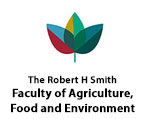Citation:
Date Published:
JUN 24Abstract:
Two-component plant defenses such as cyanogenic glucosides are produced by many plant species, but phloem-feeding herbivores have long been thought not to activate these defenses due to their mode of feeding, which causes only minimal tissue damage. Here, however, we report that cyanogenic glycoside defenses from cassava (Manihot esculenta), a major staple crop in Africa, are activated during feeding by a pest insect, the whitefly Bemisia tabaci, and the resulting hydrogen cyanide is detoxified by conversion to beta-cyanoalanine. Additionally, B. tabaci was found to utilize two metabolic mechanisms to detoxify cyanogenic glucosides by conversion to non-activatable derivatives. First, the cyanogenic glycoside linamarin was glucosylated 1-4 times in succession in a reaction catalyzed by two B. tabaci glycoside hydrolase family 13 enzymes in vitro utilizing sucrose as a co-substrate. Second, both linamarin and the glucosylated linamarin derivatives were phosphorylated. Both phosphorylation and glucosidation of linamarin render this plant pro-toxin inert to the activating plant enzyme linamarase, and thus these metabolic transformations can be considered pre-emptive detoxification strategies to avoid cyanogenesis.

